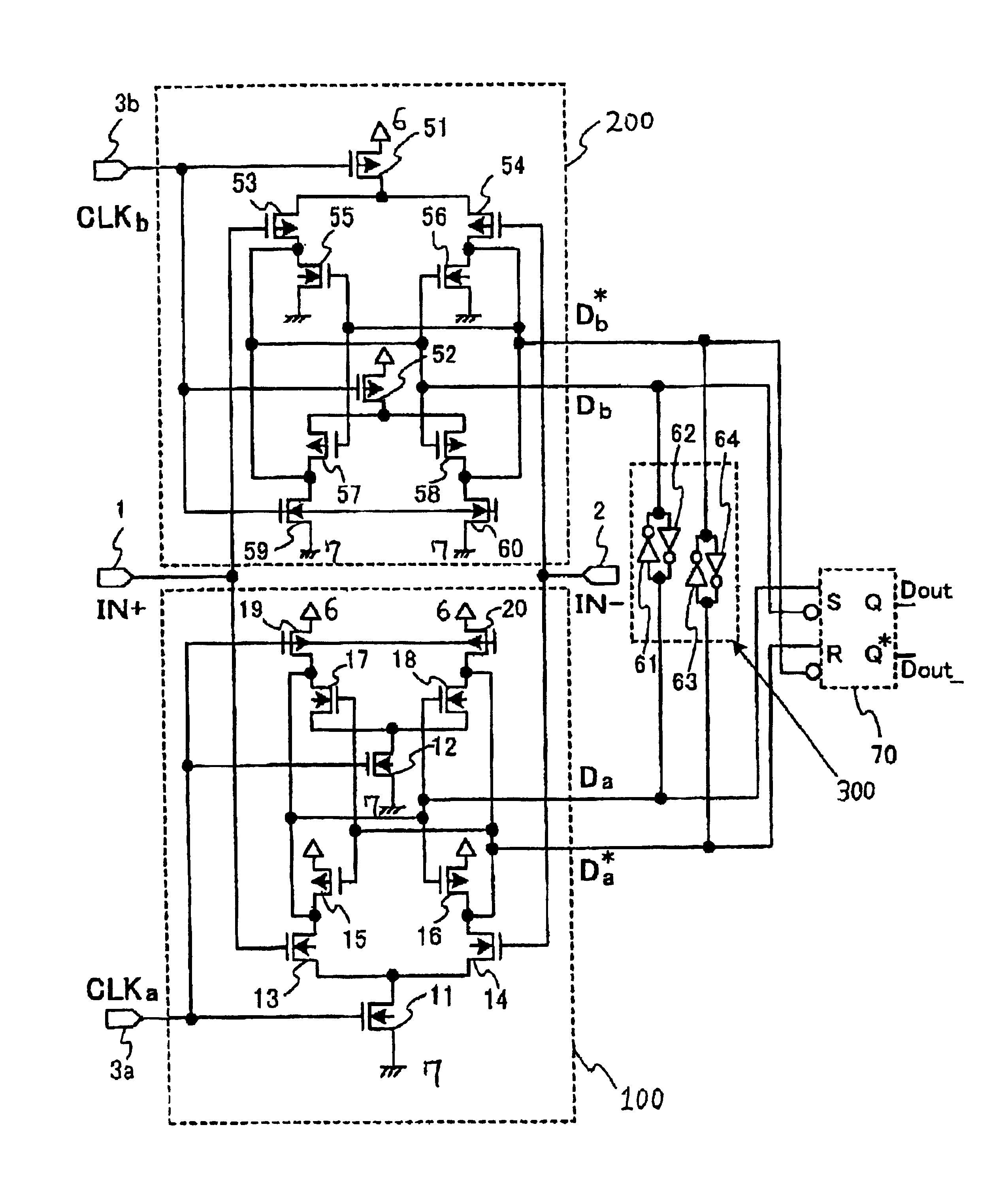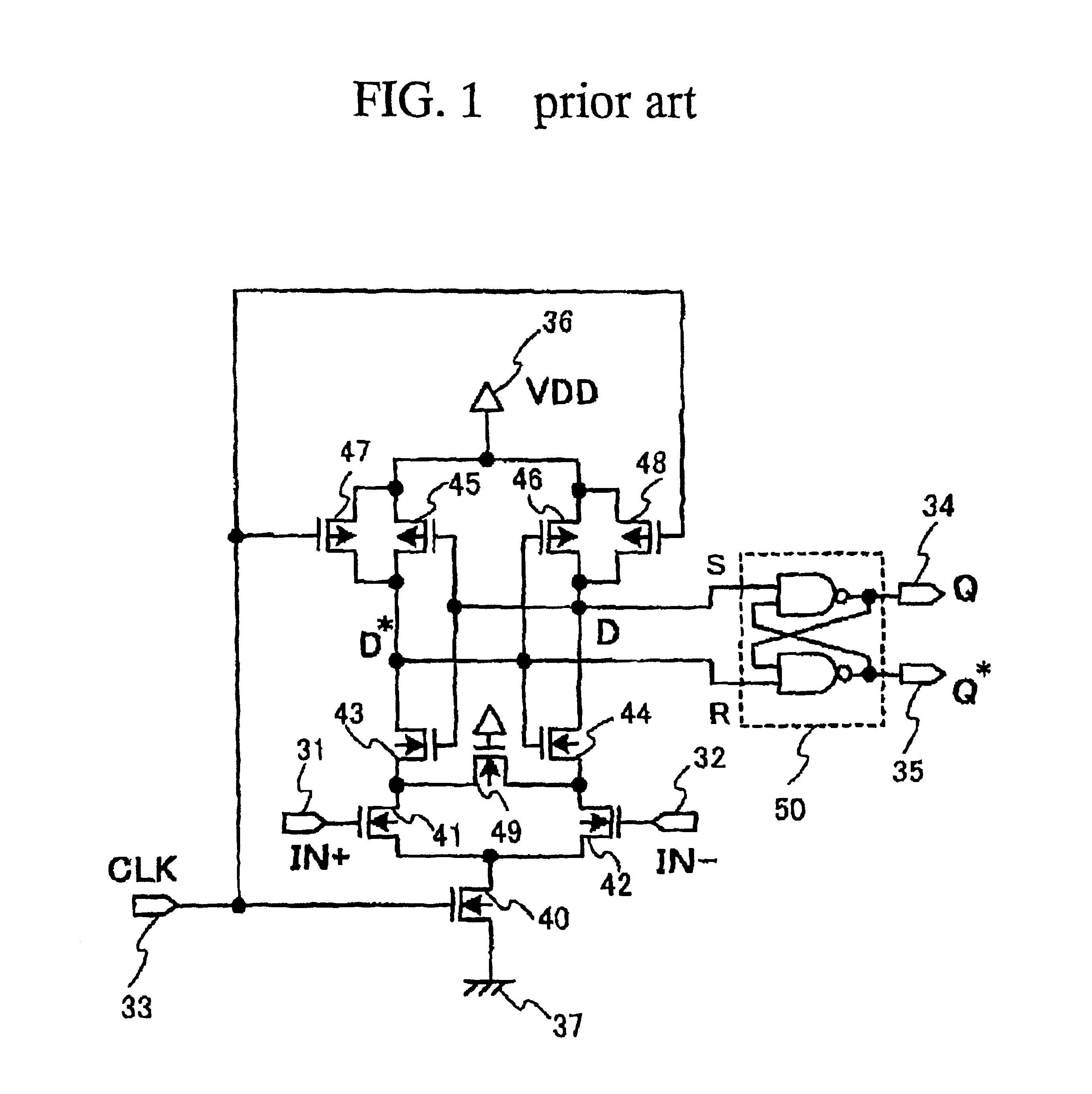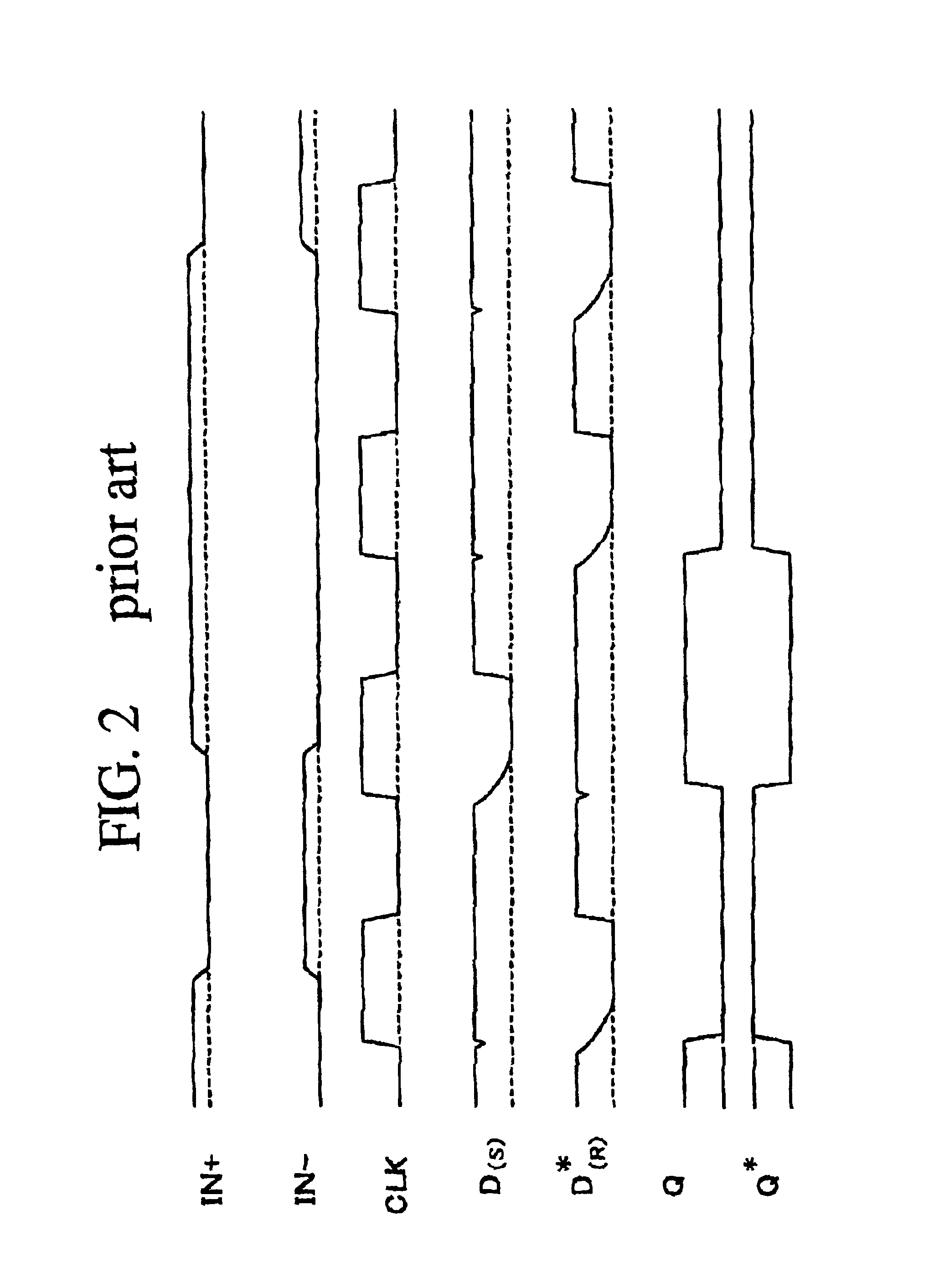High speed sampling receiver with reduced output impedance
a high-speed sampling and output impedance technology, applied in the field of sampling receivers, can solve the problems of increasing the delay time of latches, and the apparent driving ability of transistors, so as to reduce the delay time, increase the common mode level of input signals, and high-speed latch operation
- Summary
- Abstract
- Description
- Claims
- Application Information
AI Technical Summary
Benefits of technology
Problems solved by technology
Method used
Image
Examples
first embodiment
[0061]A first embodiment according to the present invention will be described in detail with reference to the drawings. FIG. 3 is a circuit diagram illustrative of a circuit configuration of one typical novel sampling receiver in a first embodiment in accordance with the present invention. The sampling receiver has the following circuit configuration.
[0062]The sampling receiver includes a master latch circuit and a slave latch circuit. The slave latch circuit comprises a set-reset-flip-flop circuit 50 which has two input terminals “S” and “R” and two output terminals 4“Q” and 5“Q*”. The input terminal “S” of the slave latch circuit receives the output “D” from the master latch circuit. The input terminal “R” of the slave latch circuit receives the output “D*” from the master latch circuit.
[0063]The master latch circuit includes a differential input transistor pair and a bistable circuit. The bistable circuit comprises two CMOS inverters. The differential input transistor pair furthe...
second embodiment
[0082]A second embodiment according to the present invention will be described in detail with reference to the drawings. FIG. 5 is a circuit diagram illustrative of a circuit configuration of one typical novel sampling receiver in a second embodiment in accordance with the present invention. The sampling receiver of this second embodiment has the following circuit configuration which is different from the first embodiment in including both a first differential input transistor pair of two n-channel MOS field effect transistors 13 and 14 and a second differential input transistor pair of two p-channel MOS field effect transistors 23 and 24.
[0083]The sampling receiver includes a master latch circuit and a slave latch circuit. The slave latch circuit comprises a set-reset-flip-flop circuit 50 which has two input terminals “S” and “R” and two output terminals 4“Q” and 5“Q*”. The input terminal “S” of the slave latch circuit receives the output “D” from the master latch circuit. The inpu...
third embodiment
[0100]A third embodiment according to the present invention will be described in detail with reference to the drawings. FIG. 7 is a circuit diagram illustrative of a circuit configuration of one typical novel sampling receiver in a third embodiment in accordance with the present invention. The sampling receiver of this third embodiment has the following circuit configuration which is different from the second embodiment in the absence of the current-supplying p-channel MOS field effect transistor 25 and the series connection of the two inverters 26 and 27.
[0101]The sampling receiver includes a master latch circuit and a slave latch circuit. The slave latch circuit comprises a set-reset-flip-flop circuit 50 which has two input terminals “S” and “R” and two output terminals 4“Q” and 5“Q*”. The input terminal “S” of the slave latch circuit receives the output “D” from the master latch circuit. The input terminal “R” of the slave latch circuit receives the output “D*” from the master la...
PUM
 Login to View More
Login to View More Abstract
Description
Claims
Application Information
 Login to View More
Login to View More - R&D
- Intellectual Property
- Life Sciences
- Materials
- Tech Scout
- Unparalleled Data Quality
- Higher Quality Content
- 60% Fewer Hallucinations
Browse by: Latest US Patents, China's latest patents, Technical Efficacy Thesaurus, Application Domain, Technology Topic, Popular Technical Reports.
© 2025 PatSnap. All rights reserved.Legal|Privacy policy|Modern Slavery Act Transparency Statement|Sitemap|About US| Contact US: help@patsnap.com



